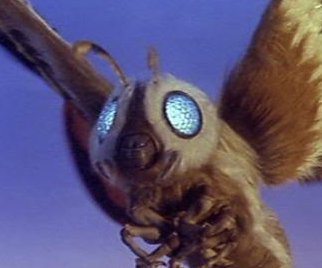A graduation cap! Just finished the bachelor’s woo.
Congratulations
Thanks!
Lobsters don’t wear hats. And there’s a profound reason for this, one that resonates deeply within the evolutionary hierarchies that have shaped not just lobsters, but, more importantly, you. Now, some might scoff at the notion, “Lobsters and hats? What possible connection could there be?” But to dismiss this out of hand is to miss a critical truth embedded in the very structures of our existence—both at the level of the lobster and the human psyche.
Let’s start with the lobster. A lobster, as we know, is an ancient creature—200 million years of evolutionary survival, of order and dominance in the chaotic seas. These crustaceans have lived through epochs, yet in all this time, they’ve never once chosen to don a hat. Why is that? Is it merely because they lack opposable thumbs or a sense of style? I would argue no. The lobster, in its infinite biological wisdom, understands something we do not: the wearing of hats is fundamentally anti-hierarchical. It disrupts the natural order.
Lobsters establish dominance through posture, through their sheer presence in the social hierarchy of the ocean floor. A lobster doesn’t require adornment to signal its place in the world; its claws, its form, its very existence is enough. Now, think about a hat. A hat is an artifice. It’s something we place atop our heads to signal—what, exactly? Status? A desire for attention? An attempt to impose an external structure on an internal hierarchy? The lobster doesn’t need such a signal. It knows where it stands because it has clawed its way to the top, literally and figuratively. To wear a hat would be to mask that truth, to cover up the raw, unmediated display of power and dominance that the lobster exudes.
Now, you might be wondering how this applies to you, the modern human. Well, I too once faced the decision: should I wear a hat? At first glance, it seemed innocuous, even practical. But the more I thought about it, the more I realized that to wear a hat was to engage in the same superficial posturing that lobsters so wisely avoid. It’s not just about fashion. It’s about philosophy. When we put on a hat, we’re signaling to the world that we need something external to define who we are. We’re masking our true position in the dominance hierarchy with an accessory. A hat, in this sense, is a lie.
Consider, for a moment, the ancient Greeks. Did Socrates wear a hat? Plato? No. They didn’t need one. Their intellect, their understanding of order, was enough. They weren’t trying to signal anything beyond their deep understanding of the human condition. Now contrast this with the Romans—yes, they wore helmets, but look at what happened to them! Their empire fell, not because of poor military strategy, but because they relied too much on symbols of power, rather than the power itself. The hat is the helmet of the everyday individual, a symbol of superficial control in a chaotic world. But true strength, as the lobster understands, comes from within.
Now, some might argue, “But what about protection from the elements? Isn’t a hat just practical?” And here is where the trap lies. Yes, one might say that a hat shields you from the sun, the rain, and other external forces. But this is precisely the problem. The lobster doesn’t need protection from the elements. It adapts. It evolves. It survives. By relying on a hat, you are, in essence, signaling to the world that you are unable to adapt, that you are weak, fragile, in need of shielding. You’re saying, “I can’t handle the harshness of reality on my own.” The lobster, however, understands that reality is not something to be avoided, but something to be confronted head-on, with claws outstretched.
And so, in deciding not to wear a hat, I am aligning myself with the ancient wisdom of the lobster. I am refusing to bow to the superficial demands of society that say, “You need this accessory to be complete.” No, I am complete as I am—hatless, and in full possession of my place in the dominance hierarchy. The lobster knows this. And deep down, so do you.
In conclusion, lobsters don’t wear hats because they don’t need to. They understand their place in the world and act accordingly. Hats are a distraction, a false signal of strength and status. And if we, as human beings, truly want to understand our place in the hierarchy, we too must reject the hat. We must embrace the clarity of our being, unadorned, like the lobster, in full recognition of our strength.
Is this an air?
Does a bike helmet count?
Yes
My new MIPS bicycle helmet. Works super great!
Hard.
I wore a beanie this morning as it was quite chilly outside.
Yesterday I wore a helmet while riding my bike. Not sure if that counts as a hat.
A black knitted beanie
This morning, baseball cap.
Probably a bucket hat to keep the sun out of my face while reading in the backyard.
Outside: Baseball cap
Indoors: Wizard hat
I almost never wear hats unless it’s very cold out and I need a winter hat. So, it would have been a wooly knit hat to keep my head warm.
*This does not include when my spouse and I are shopping at a clothing place and we try on goofy hats off the rack for the lulz.
It was a panama hat woven from bamboo fibre that I bought at a fair to keep from getting sunburned.
A visor.
umbrella hat
Like this?

lol no. like this https://en.wikipedia.org/wiki/Umbrella_hat
One of these brewery hats. My 2nd favorite brewery.
Long Live started in Providence, RI. and a year ago opened 2nd spot very close to me in Boston.










